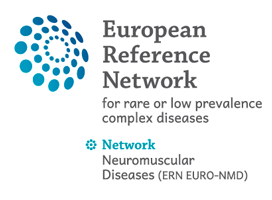21 Apr 2020
Teaching Video NeuroImages: Palatal tremor associated with SPG7 variants
Authors:
Guido Primiano, Ginevra Zanni, Marta Nardella, Serenella Servidei
A 58-year-old woman presented with a 30-year history of progressive ataxia, dysarthria, and bilateral leg spasticity. Neurologic examination revealed involuntary movement of the uvula and soft palate at 2–3 Hz (video). Brain MRI showed only cerebellar atrophy (figure). Targeted next-generation sequencing identified a pathogenic homozygous variant in the SPG7 gene (c.773_774delTG; p.V258Gfs*30) leading to the diagnosis of spastic paraplegia type 7. Palatal tremor may be present in a variety of acquired or familial disorders1 such as cerebrotendinous xanthomatosis, SCA20, POLG-related disorders, neuroferritinopathy, and Alexander disease, but it was reported in only one patient with SPG7 mutations.2 Our observation confirms that SPG7 screening should be considered in patients with palatal tremor and ataxia.

